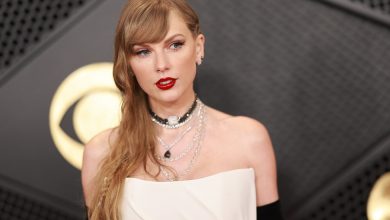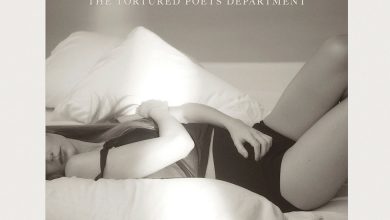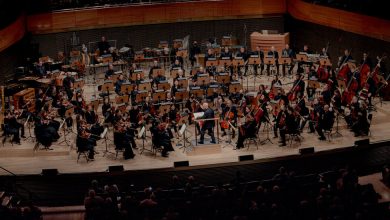Not Off the Rack: This Year’s Bespoke ‘Nutcracker’ at City Ballet

When the costumers at New York City Ballet dug into storage to unearth “Nutcracker” costumes in September, they noticed something wrong with the silver bells that adorn the pink-and-green striped candy cane outfits: They were rusted.
During the months that the city battled the worst waves of the coronavirus, Lincoln Center fell into disuse, and building management turned off the controlled air in the basement of David H. Koch Theater, where “Nutcracker” costumes are kept.
City Ballet has been performing “George Balanchine’s The Nutcracker” in roughly the same way using roughly the same costumes for more than 60 years. The Candy Cane costumes of today look mostly the same as they did when Balanchine premiered the ballet in 1954. So, when the company returned from a year without “Nutcracker,” there was hope that it would be able to dust off the Mouse heads, shake out the Soldiers’ uniforms and go back to the way things were in the before times.
The rusty bells turned out to be the least of City Ballet’s problems.
With a still-present threat of the pandemic, the company decided that the 2021 “Nutcracker” would be performed by a fully vaccinated cast, which — when they made the decision a few months ago — meant that dancers under 12 years old would not be allowed and about three-quarters of each children’s cast would have to be replaced. Those roles had to be filled by older children, and older meant taller, which meant that the costumes in storage were not going to work.
For the first time since the production’s premiere, the City Ballet costume shop needed to build nearly 130 costumes from scratch: distinguished toy Soldiers, glittering Angels with their Hula-Hoop skirts, jingly Candy Canes, girls and boys in their Victorian-era attire.
“We were automatically behind — from Day 1,” said Marc Happel, City’s Ballet director of costumes, as he sat in the costume shop a week before the production’s first dress rehearsal in November.
Not only did the shop need to build dozens of costumes for older, taller dancers — some the size of professionals in the corps de ballet — it needed to create outfits that could be easily alterable back down to their smaller, pint-size forms. Skirts needed cleverly hidden seams that, next year, could be adapted to fit a smaller dancer; bodices needed shortcuts for shrinking the waists.
The silver lining, though, was that Happel had a clean slate and a significant budget, which ended up totaling about $375,000. He decided to make a change that he had been long thinking about: to go back to the original designs by Barbara Karinska, the Russian-born designer who had been associated with City Ballet since its beginnings.
“Here in the costume shop, I always try to go back to what Karinska did,” Happel said. “That’s my job: to honor her as much as we can.”
Joseph Shrope, Happel’s assistant, set out to determine what details had been lost from Karinska’s designs over the decades of remakes and redesigns. He focused narrowly on what they call the Party Girls, the young guests at the Stahlbaums’ Christmas Eve party who chatter giddily with one another and hold out their skirts in a cheery jig.
Shrope started with Karinska’s sketches, preserved in the New York Public Library’s digital collections, and traced their development through production photographs and video footage of televised performances. He noticed that the color of the dresses had evolved from the dustier, pastel palette of the 1950s and that certain design flourishes had faded away over the decades.
“So like this girl with the capelet,” Shrope said, pointing to a costume with a little embellished cape jutting out over the shoulders, “after 1968, she disappears forever. We never see that costume again.”
Happel and Shrope have brought back the original color palette, as well as details that audience members are not likely to notice but give the dresses a thoughtful flair: the capelets, a scalloped edge on some of the skirts, a box-pleated sleeve and ribbons lining the white bloomers.
In building a new collection, it was also Shrope’s job to track down the raw materials that previous drapers used to make the costumes.
But, he discovered, some of those trusted suppliers no longer existed. The man who handcrafted pom-poms had died during the pandemic, so Shrope needed to find someone else to make the golden-yellow puffs that adorn the costumes of the Polichinelles, the young dancers who emerge from Mother Ginger’s gigantic skirt in the second act. (A pom-pom maker in New Jersey passed the test.) Shrope found a supplier for stainless steel rust-resistant silver bells, too.
Creating so many costumes was more than City Ballet’s in-house costume department could handle, so it outsourced some of the work to other shops, including Arel Studio in the garment district and Parsons-Meares in Long Island City, Queens, as well as to an independent costume maker in Pennsylvania.
At Parsons-Meares, the craftspeople had to put aside their orders for “Hamilton” and “The Lion King” so they could focus on finishing the costumes for 24 Angels, 16 Candy Canes and 12 Party Girls, as well as the dress and nightgown for Marie, the young heroine.
Sally Ann Parsons, who started the shop in 1980 with her husband, was wary of taking on more work at a time when every performing arts organization in the city seemed to be in need of new and altered costumes for reopenings.
But Happel convinced her with his vision of returning to the original Karinska designs. As a teenager, Parsons was a fan of Balanchine’s City Ballet, watching performances from the cheap balcony seats. She had admired Karinska’s costumes but never got the chance to work with her. (Karinska died in 1983, at 97.)
“This has become an opportunity to indirectly work with Barbara Karinska,” Parsons said on an afternoon in mid-November as her employees bustled around the workshop, busy with their “Nutcracker” creations.
In an airy work room filled with old sewing machines and towering shelves full of fabric, craftspeople stitched, pinned, sewed, stepping back from the mannequins to admire their work.
“I feel like a very busy Victorian dressmaker,” said Patricia Murphy as she pieced together fabric for the sleeve of Marie’s mint-green party dress, her dog Tazzy chasing a spider at her feet.
As Shrope examined an unfinished puce skirt pinned onto a mannequin, he pointed to a 1964 drawing sitting on the counter for comparison. “She will end up looking just like Karinska’s sketch,” he said.



